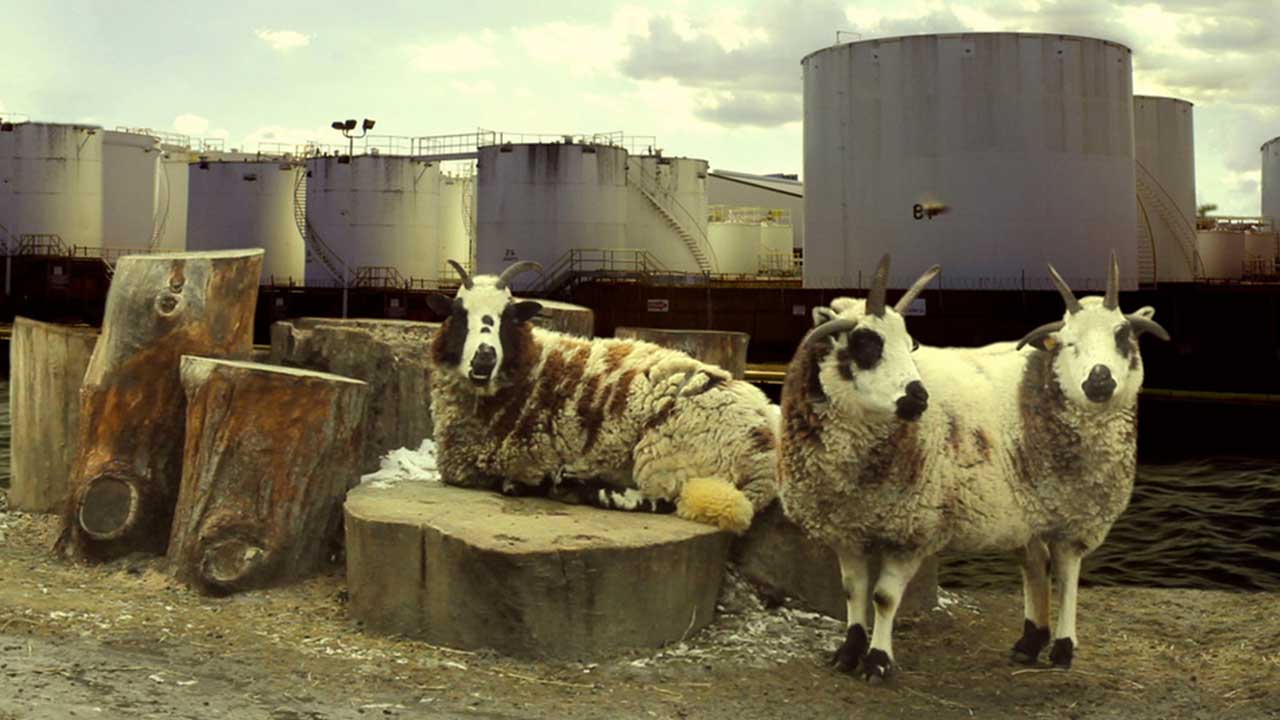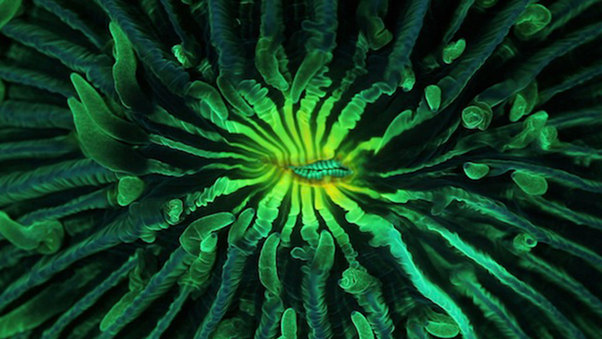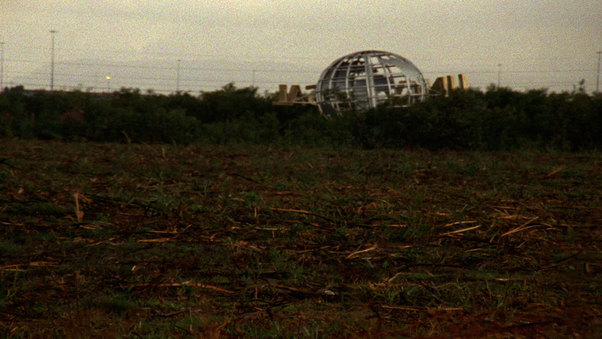A New Wave of Climate Change Cinematography
These shorts propose various cinematic readings on how we capture our destabilized climate and its lasting effects on our ecosystem.
Climate change has been a hot button topic for the last quarter century, but funnily, it is rare to find art (or even rarer, apolitical art) influenced by it. For this reason, we are proud to showcase the following films, as climate change features prominently in each of them as a phenomenon that needs no convincing. It already exists, is acknowledged, and functions as a part of each film’s respective landscape. These eight shorts are born from a world where historically unprecedented climate change is the reality, inspiring art just as broken relationships, new love, oppression, existentialist thought and disillusionment do.
So think hard: when was the last time you had a conversation about climate change that didn’t open the door for political commentary or a lecture on how to be a more ethical consumer? That’s not to say that the following films aren’t meant to stimulate a sense of urgency, but it is worth pointing out that they are presented in a way that facilitates art-centric discussion, shifting the focus from crisis management to the far more interesting: Wow, what the hell did I just watch?
Single photo corrodes in petri dish (Deforest)
In this Spotlight we have selected five films—Deforest, Wayward Fronds, The Coral Reef are Dreaming Again, Season of Wonder, and Subatlantic—that take the effects of climate change and bury them under layers of experimental cinematography. Via a series of time-lapse videos capturing the dissolution of old rainforest photographs with sulphuric acid, Deforest by director Grayson Cooke is sad and patient. “Rather that approaching the issue of deforestation through a documentary lens, Deforest takes a different approach, one more akin to media archaeology,” Cooke explains. “The project seeks to find a media analogue for the depletion of the world’s forests, using photographic media and a corrosive acid to 'materialize' deforestation along different channels than the documentary record.” Paired with the hauntingly beautiful music of Matthew Bourne, the film is mesmerizing and infuriating, agitating the viewer who must sit and watch helplessly as each photo boils and curdles until it is indistinguishable from a Fruit Roll Up.
Sulphuric acid over assemblage of rainforest photos in Grayson Cooke's studio (Deforest)
Wayward Fronds by Fern Silva is even more unsettling. In it Silva reconstructs footage from the real lifespan of the Florida Everglades with scenes from the imagined future, when the tables turn and the Everglades begins to “tame civilization after centuries of attack…and guides it into its mysterious aqueous depths, forcing humans to adapt and evolve to its surroundings.” Shot with a 16mm Bolex, Wayward Fronds takes the shape of a Blair Witch-style home video. One moment the viewer is lying on the ground, watching the tail of a boa constrictor slink across the floor. The next he is hiding in the bushes as a beauty pageant mermaid readjusts her gaudy pink tippet.

Two snakes escape the marshes and intrude on the man-made (Wayward Fronds)
Much like Wayward Fronds, Season of Wonder by Lisa Crafts also situates the viewer in an altered present, though this time the eeriness arises from blank mammalian stares and fast motion captures of everyday redundancies that, when set against a landscape of desolation, seem slightly off. The film is described by Crafts as a “cine-poetic work that situates us amongst the irregular cycles of a destabilized world. [In it] a perceptual blur arises, where the freakish quietly morphs into the everyday. Cycles of time are disrupted and loss is complicated with the spark of possibilities.”

Filmmaker Lisa Crafts in motion (Season of Wonder)
In both films, the viewer feels imposing, an effect further amplified in Ursula Biemann’s fictional cine-essay, Subatlantic. At a run time of just over ten minutes, Biemann’s essay is narrated softly, monotonously even, conjuring an image of a scientist dreamily talking to herself as she attempts to navigate the mental and ecological dimensions of the melting Arctic icescapes. The film is presented like a video diary, using footage of melting ice sheets, fish, and algae along with a transcript of the essay at the end to “ponder upon the entanglements of geological time with that of human history [and] narrate a changing planetary reality.”

Ursula Biemann on a solitary shoot in Greenland (Subatlantic)
Finally, in Lucas Levya’s The Coral Reef are Dreaming Again, two Floridian corals, Harold and Gregor, share their dreams with each other. Harold nightmares of the extinction of his kind. Gregor nightmares too, though in his nightmares he has assumed the body of the human-equivalent of a coral: a transvestite, beautiful and fluid. Remarkably, Levya films real coral specimens, creating a hypnotic final product matched only by the vibrancy of the drag world.

Real coral specimens (The Coral Reef are Dreaming Again)

A still from Gregor's dream (The Coral Reef are Dreaming Again)
Films Featured in Labocine
Deforest (Director: Grayson Cooke)
Deforest is an art/science project that combines environmental critique with material enquiry. In this project, sulphuric acid – a highly corrosive acid that burns to the touch – is used to dissolve photographs of old growth rainforest from subtropical Queensland.
Deforestation is one of the key planks of anthropogenic climate change. It is responsible for around 12% of the world’s greenhouse gas emissions, and also causes erosion and biodiversity loss. Our forests are vital carbon sinks, but they are also repositories of extra-human time, a kind of “memory of the earth” that is erased daily to serve the needs of the present. Within the context of the Anthropocene, deforestation is an urgent touchstone for the threshold between economic and environmental imperatives in both developed and developing nations.
This project focuses on these issues in a unique way. Deforest seeks to find a media analogue for the depletion of the world’s forests, using photographic media and a corrosive acid to “materialize” deforestation along different channels than the documentary record. The ruin of the image, the experience of its loss, and its relation to the world at large lies at the core of this project.
Time-lapse photography is used to record the complex interaction between the acid and the slide film. The image is accompanied by music by Matthew Bourne and a soundtrack composed primarily of environmental recordings in the Bunya Mountains, a temperate rainforest in South-East Queensland and the site of the photographs used in this project.
Wayward Fronds (Director: Fern Silva)
Wayward Fronds references a series of historical events that helped shape the Florida Everglades today, while fictionalizing its geological future and its effects on both native and exotic inhabitants. Guided by recent talks in the Florida legislature to finally disburse billions of dollars in restoration funds, events in this film unfold by giving way to a future eco-flourished Everglades. Nature begins to take over, en-gulfs and tames civilization after centuries of attack, and even guides it into its mysterious aqueous depths, forcing humans to adapt and evolve to its surroundings.
The Coral Reef are Dreaming Again (Director: Lucas Levya)
Gregor and Harold, two corals living in the underwater remains of Miami, share their dreams with each other. Made without any computer effects, using real coral specimens.
Season of Wonder (Director: Lisa Crafts)
Season of Wonder is a cine-poetic work that situates us amongst the irregular cycles of a destabilized world. It intertwines that which I witness with that which I imagine. A perceptual blur arises, where the freakish quietly morphs into the everyday. I am working in the area of unnatural history in an intervened place. Cycles of time are disrupted, and loss is complicated with the spark of possibilities.
Subatlantic (Director: Ursula Biemann)
The science fictional video essay unfolds across the Subatlantic, the latest climatic phase of the Holocene that began about 2,500 years ago and is still ongoing. With its peaks and drops, this climatic period has registered major civilizational changes and movements, juxtaposing the science of geology and climatology with human history. The voice-over alludes to a she-scientist who is making instrumental observations about a changing environment around the last glacial melts. From an increasingly submerged place of oceanic observation, her objects of examination are as much the physical world and atmosphere that is engulfing her as the thoughts that are formed, reconfigured or released under the changing conditions. Subatlantic, of course, also means the submerged space of the Atlantic Ocean. Set in the Shetland Islands, Greenland’s Disco Bay and a tiny Caribbean Island, the video implicates far apart locations yet connected through invisible Ocean streams, which determine the temperatures in the North Atlantic, sea and land. The video addresses two submerged dynamics that ensue from the melting of the Arctic ice, the slowing down of the Ocean streams and the release of massive new genetic materials that have been locked in the ice sheets for longer than human time. In both instances, the dynamics driving these physical processes are non-localized and invisible to our eye."







_1000x667.jpg)
